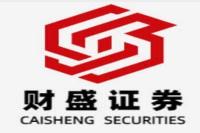双成药业23天21板后暴跌:一场高风险的资本盛宴?
元描述: 双成药业23天21涨停板后暴跌,揭秘其背后惊人的重组计划、游资操纵、高风险投资以及中小投资者需警惕的潜在风险。深入分析事件始末,解读资本市场风险与机遇。
Imagine this: a seemingly ordinary pharmaceutical company, Shuangcheng Pharmaceutical (002693.SZ), suddenly explodes onto the stock market scene. Twenty-one consecutive daily limit-up moves in just 23 trading days! A staggering 498.46% increase! It sounds like a dream come true for investors, right? But what happens when the music stops? This isn't some fairy tale; it's the real-life story of Shuangcheng Pharmaceutical's meteoric rise and subsequent dramatic fall, a cautionary tale brimming with insider trading whispers, savvy speculators, and a hefty dose of market manipulation. This deep dive into the Shuangcheng Pharmaceutical saga will unpack the events, the players, and the crucial lessons learned. Get ready to uncover the truth behind this astonishing market roller coaster – a rollercoaster that left many investors with a stomach-churning sense of deja vu. We’ll analyze the crucial details, separate fact from fiction, and guide you through the complex landscape of Chinese stock markets. This isn't just about numbers; it's about understanding the human element driving this incredible story, the hopes, fears, and ultimately, the consequences faced by everyone involved. Prepare for a rollercoaster ride that's both exhilarating and alarming, because this story is more than just a stock market anomaly – it’s a snapshot of China’s dynamic and sometimes unpredictable financial landscape. Buckle up, because we're about to delve deep into the heart of this fascinating, and frankly, slightly terrifying, case study.
双成药业 (Shuangcheng Pharmaceutical): The Anatomy of a Market Frenzy
Shuangcheng Pharmaceutical's roller coaster ride began on September 11th, 2024, its first day of trading after a period of suspension. The company announced a significant asset restructuring and related-party transaction, involving the acquisition of Ningbo Aura Semiconductor Co., Ltd. (Aura), a chip development company. This announcement ignited a frenzy of trading activity, culminating in 21 consecutive daily limit-up moves. But was it all justified?
The rapid price surge raised several red flags. First, the timing was suspicious. The stock experienced a slight dip on August 26th, only to skyrocket by 9.2% on August 27th – the very day the major restructuring was announced after market close. This raises questions about information leakage and potential insider trading.
Second, the involvement of individual investors who seemingly timed their investments perfectly is noteworthy. Two individuals, Zhao Huimin and Ying Shuyin, suddenly became major shareholders just before the price surge, realizing massive profits in a short time. While Shuangcheng Pharmaceutical denies any connection to these individuals, the timing remains highly questionable and adds fuel to the speculation fire.
Third, the significant role played by well-known "hot money" traders, such as Chen Xiaoqun and Fen Ge, cannot be ignored. These seasoned traders, known for their aggressive trading strategies, heavily participated in the price surge, profiting massively before exiting their positions just days before the crash. Their actions are a clear indicator of speculative trading driving the price up.
The Financial Performance of Shuangcheng Pharmaceutical: A Troubled History
Before the market frenzy, Shuangcheng Pharmaceutical's financial performance left much to be desired. For eight consecutive years (2016-2023), the company reported losses after deducting non-recurring items, totaling approximately 722 million yuan. Even in the first half of 2024, the company reported a net loss of 16.946 million yuan. This paints a picture of a company struggling financially, yet its stock price soared to unprecedented heights. Why?
The answer, it seems, lies in the acquisition of Aura. Despite Aura also having a history of losses (due to stock option expenses, which are now fully amortized), the market seemed to believe in its potential, even before the successful restructuring. This fuelled the speculation that Aura's business might finally succeed and that the deal would allow it to effectively list on the exchange through a backdoor listing – a common, though sometimes risky, tactic in the Chinese market.
The Acquisition of Aura: A Risky Gamble?
The proposed acquisition of Aura is a complex transaction involving asset swaps, share issuance, and cash payments. While Aura’s recent profitability is encouraging, the deal's success is far from guaranteed. The audit and valuation processes were still ongoing at the time of the crash, highlighting the inherent uncertainty surrounding the transaction. The deal's success depends on regulatory approvals, which are never a given. This uncertainty, combined with the preceding market frenzy, created a volatile environment, ripe for a sudden reversal.
The Role of Market Speculation and Information Asymmetry
The Shuangcheng Pharmaceutical case perfectly illustrates the dangers of market speculation and information asymmetry. The rapid price increase was primarily driven by speculation, fueled by the announcement of the potential acquisition and the actions of experienced speculators. Information asymmetry – where some players have access to information that others do not – played a significant role. The timing of the individual investors' purchases, and the actions of the well-known hot money traders, suggest the possibility of insider information or at least, much quicker access to information than the average market participant.
This highlights the crucial importance of due diligence and informed decision-making for investors. Rushing into investments based on speculation alone can lead to significant losses.
The Aftermath: A Harsh Lesson in Market Volatility
The market correction was swift and brutal after the 21-day limit-up streak ended. The stock price plummeted, wiping out much of the gains made during the speculative rally. This underscored the high risk associated with investing in volatile stocks, particularly those involved in complex restructuring processes. The incident serves as a potent reminder that market sentiment can shift rapidly, and that even seemingly solid investment opportunities can turn sour in the blink of an eye.
Lessons Learned: Navigating the Complexities of the Chinese Stock Market
The Shuangcheng Pharmaceutical case offers several valuable lessons for investors:
- Due Diligence is Paramount: Don't jump on the bandwagon without thorough research. The company's financial history, the details of the proposed acquisition, and the potential risks should all be carefully evaluated.
- Be Wary of Speculative Bubbles: Rapid price increases, particularly those driven by speculation, are often unsustainable. A correction is almost inevitable.
- Understand the Risks of Insider Trading: The possibility of insider trading creates substantial risks for investors who are not privy to the same information.
- Diversify Your Portfolio: Don't put all your eggs in one basket. Diversification is key to mitigating risk.
- Beware of "Hot Money": The involvement of professional traders can signal both opportunity and danger. These traders are often highly skilled, and sometimes, they manipulate markets.
Frequently Asked Questions (FAQs)
Q1: What caused the dramatic price surge in Shuangcheng Pharmaceutical?
A1: The primary driver was speculation surrounding a proposed acquisition of Aura, a chip development company. The announcement ignited a frenzy of trading activity, fueled by the potential for significant returns and the actions of speculators who potentially had access to insider information.
Q2: Were there any signs of market manipulation?
A2: Yes, several red flags suggest market manipulation. The timing of the announcement, the involvement of individual investors who seemingly timed their investments perfectly, and the actions of well-known speculators all raise concerns about potential insider trading and manipulation.
Q3: What happened to the stock price after the 21-day limit-up streak?
A3: The stock price plummeted after the 21-day run, wiping out much of the gains accumulated during the surge. This highlights the extreme volatility of the stock and the risks of investing in companies involved in complex restructuring processes.
Q4: What is the current status of the Aura acquisition?
A4: As of the time of writing, the audit and valuation processes were still ongoing, and the deal's success remained uncertain. Regulatory approvals were still pending.
Q5: What lessons can investors learn from the Shuangcheng Pharmaceutical case?
A5: Investors should always conduct thorough due diligence, be wary of speculative bubbles, and understand the risks associated with investing in volatile stocks. Diversification and risk management are crucial.
Q6: What is the future outlook for Shuangcheng Pharmaceutical?
A6: The future outlook remains uncertain. The success of the Aura acquisition will significantly impact the company's future performance. Investors should closely monitor developments related to the acquisition and the company's financial performance before making any investment decisions.
Conclusion
The Shuangcheng Pharmaceutical story is a compelling case study in market volatility, speculation, and the potential for significant gains and losses. While the initial surge offered the allure of quick riches, the subsequent crash served as a harsh reminder of the inherent risks involved in investing, especially in volatile markets. The incident underscores the importance of due diligence, risk management, and a cautious approach to investment decisions in the dynamic and complex world of Chinese stock markets. For the average investor, patience, research, and a long-term perspective are essential for navigating the sometimes turbulent waters of the stock market. Always remember: if it sounds too good to be true, it probably is.



